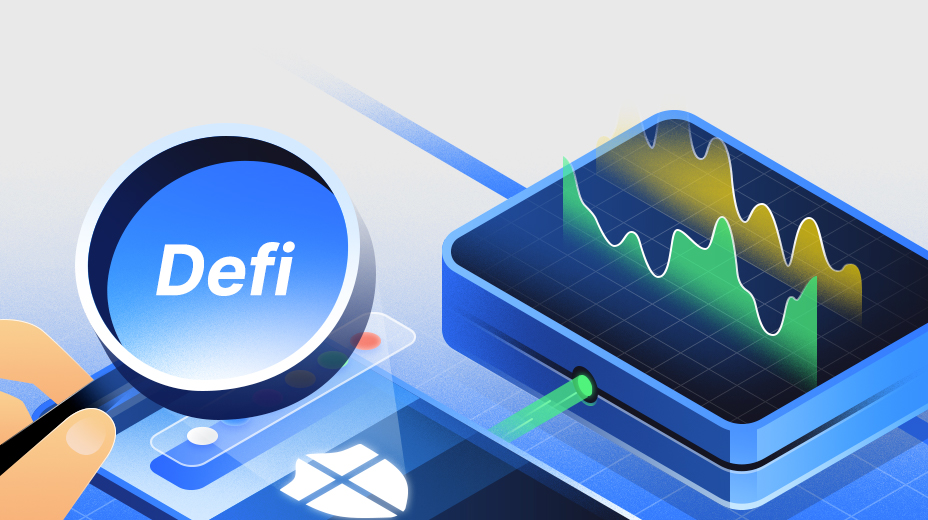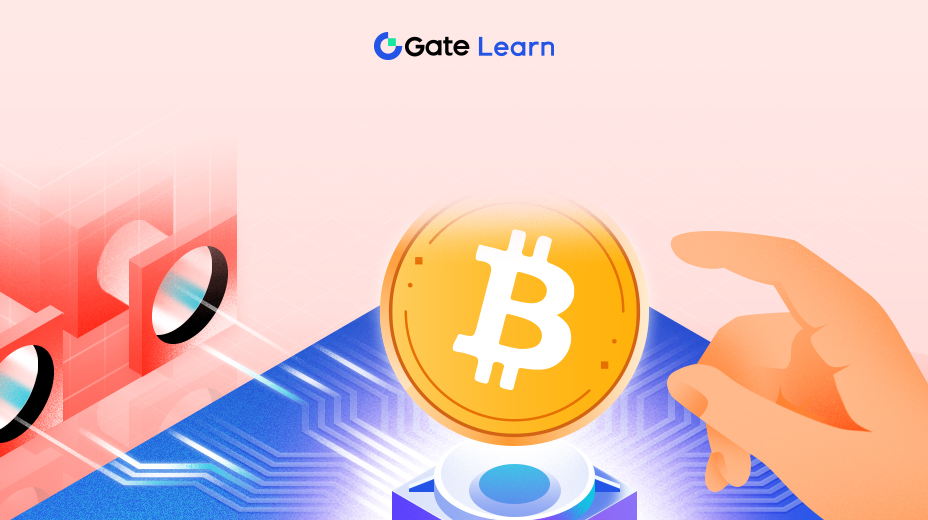Compreendendo as redes de infraestrutura física descentralizada (DePIN)
Neste módulo, nos aprofundaremos nos aspectos fundamentais das Redes Descentralizadas de Infraestrutura Física (DePIN). Exploraremos os fundamentos da tecnologia blockchain, o conceito e o significado do DePIN, como o DePIN está transformando o desenvolvimento de infraestrutura e uma análise comparativa do DePIN versus modelos de infraestrutura tradicionais. Este módulo prepara o terreno para a compreensão do impacto revolucionário do DePIN em vários setores.
Introdução à tecnologia Blockchain
A tecnologia Blockchain é um livro-razão digital descentralizado que registra transações em vários computadores. Essa tecnologia garante a integridade e segurança de um registro de dados e gera confiança sem a necessidade de terceiros de confiança. Uma blockchain coleta informações em grupos, conhecidos como blocos, que contêm conjuntos de informações. Os blocos possuem determinadas capacidades de armazenamento e, quando preenchidos, são fechados e vinculados ao bloco previamente preenchido, formando uma cadeia de dados conhecida como blockchain. Todas as novas informações após esse bloco recém-adicionado são compiladas em um bloco recém-formado que também será adicionado à cadeia depois de preenchido.
A aplicação mais notável do Blockchain está em criptomoedas, como o Bitcoin. Ele aborda o problema do gasto duplo sem a necessidade de um servidor central. A natureza descentralizada do blockchain torna as criptomoedas teoricamente imunes às formas tradicionais de controle e interferência governamental. As transações são registradas com uma assinatura criptográfica imutável chamada hash. Isso significa que se um bloco de uma cadeia fosse alterado, seria imediatamente aparente que ele havia sido adulterado. Se os hackers quisessem corromper um sistema blockchain, teriam que alterar cada bloco da cadeia, em todas as versões distribuídas da cadeia.
Blockchains como o Ethereum expandiram-se para além do simples papel de um livro-razão. Eles podem executar contratos inteligentes, que são programas armazenados na blockchain que são executados quando condições predeterminadas são atendidas. Esses contratos inteligentes automatizam um acordo para que todos os participantes possam ter certeza imediata do resultado, sem qualquer envolvimento de intermediário ou perda de tempo. Eles podem definir regras, como um contrato normal, e aplicá-las automaticamente por meio do código.
A segurança da tecnologia Blockchain vem do uso de descentralização e hashing criptográfico. Uma analogia simples para entender a tecnologia blockchain é um Google Doc. Quando criamos um documento e o compartilhamos com um grupo de pessoas, o documento é distribuído em vez de copiado ou transferido. Isto cria uma cadeia de distribuição descentralizada que dá a todos acesso ao documento ao mesmo tempo. Ninguém fica de fora aguardando alterações de outra parte, enquanto todas as modificações no documento são registradas em tempo real, tornando as alterações completamente transparentes.
O potencial do blockchain vai muito além das criptomoedas. Ele pode ser usado para armazenamento descentralizado de arquivos, auditoria da cadeia de suprimentos, prevenção de fraudes, gerenciamento de identidade e muito mais. Esta tecnologia apresenta oportunidades para aumentar significativamente a transparência e a segurança em vários setores, tornando-a uma área estimulante de desenvolvimento no mundo digital.
O conceito de DePIN
 )
)
As Redes Descentralizadas de Infraestrutura Física (DePIN) representam uma abordagem inovadora no desenvolvimento de infraestrutura, aproveitando a tecnologia blockchain. DePIN envolve o uso de blockchain para gerenciar e operar redes de infraestrutura física, como sistemas de telecomunicações, energia e transporte. A ideia central é descentralizar o controlo e a propriedade destas redes, afastando-se dos modelos centralizados tradicionais onde uma única entidade ou algumas entidades têm o controlo.
No DePIN, a infraestrutura é construída, operada e mantida por uma rede distribuída de participantes, e não por uma autoridade central. Esses participantes podem ser indivíduos, comunidades ou pequenas organizações, todos contribuindo com recursos como poder de computação, capacidade de armazenamento ou espaço físico. Em troca, recebem tokens ou ativos digitais, que podem ser utilizados dentro da rede ou negociados no mercado. Esta tokenização de recursos e serviços é um aspecto fundamental do DePIN, pois incentiva a participação e o investimento na rede.
As redes DePIN são normalmente governadas por contratos inteligentes na blockchain. Esses contratos definem as regras de funcionamento da rede, como os recursos são alocados e como os participantes são recompensados. Esta configuração garante transparência e justiça, uma vez que as regras são codificadas na blockchain e são imutáveis e verificáveis publicamente. Também permite uma gestão automatizada e eficiente da rede, reduzindo a necessidade de intermediários e diminuindo os custos operacionais.
O uso de blockchain no DePIN também aumenta a segurança e a resiliência. Como a rede é descentralizada, ela é menos vulnerável a ataques, falhas ou controle por qualquer entidade única. Cada participante da rede possui uma cópia do blockchain, garantindo que os dados não sejam perdidos mesmo se parte da rede cair. Esta redundância torna as redes DePIN robustas contra vários tipos de falhas, incluindo falhas técnicas e ataques cibernéticos.
O DePIN ainda é um conceito emergente e todo o seu potencial ainda não foi concretizado. No entanto, oferece uma alternativa promissora aos modelos tradicionais de infra-estruturas, especialmente em áreas onde o desenvolvimento de infra-estruturas é lento ou inexistente devido à falta de financiamento ou de interesse por parte de grandes empresas ou governos. Ao democratizar o desenvolvimento e a gestão da infraestrutura física, o DePIN poderá levar a sistemas mais equitativos e eficientes em todo o mundo.
Como o DePIN está mudando o desenvolvimento da infraestrutura
 )
)
O DePIN está a revolucionar o desenvolvimento de infra-estruturas ao introduzir um modelo descentralizado que contrasta fortemente com as abordagens centralizadas tradicionais. Nos modelos tradicionais, os projetos de infraestruturas como estradas, telecomunicações e redes energéticas são normalmente geridos por grandes empresas ou entidades governamentais. Estes projectos exigem frequentemente investimentos de capital significativos e estão sujeitos a processos burocráticos e influências políticas, o que pode levar a ineficiências e atrasos.
O DePIN, pelo contrário, permite uma abordagem mais popular ao desenvolvimento de infra-estruturas. Ao alavancar a tecnologia blockchain, permite que uma ampla gama de participantes contribuam e se beneficiem do desenvolvimento da infraestrutura. Este modelo pode acelerar a implantação de infra-estruturas, especialmente em áreas mal servidas ou remotas onde os modelos tradicionais não são viáveis ou eficientes. Por exemplo, uma comunidade numa área remota pode unir-se para construir e gerir uma rede energética local, com os participantes recebendo fichas em troca das suas contribuições, que podem ser utilizadas para pagar a utilização de energia ou trocadas por outros bens e serviços.
A natureza descentralizada do DePIN também conduz a sistemas de infraestruturas mais resilientes e adaptáveis. Num modelo DePIN, a falha ou mau funcionamento de uma parte da rede não prejudica necessariamente todo o sistema. A natureza distribuída da rede significa que outras partes podem continuar a funcionar de forma independente, o que aumenta a fiabilidade global da infra-estrutura. Além disso, como a rede é gerida através de contratos inteligentes, pode adaptar-se rapidamente às mudanças e incorporar novas tecnologias ou abordagens sem a necessidade de extensos processos burocráticos.
O DePIN também promove a inovação no desenvolvimento de infraestruturas. A natureza aberta e participativa das redes DePIN incentiva a experimentação e permite o surgimento de uma gama diversificada de soluções. Isto é particularmente importante em domínios como as energias renováveis e as telecomunicações, onde os rápidos avanços tecnológicos estão constantemente a mudar o cenário. Num modelo DePIN, as novas tecnologias podem ser integradas na rede de forma mais rápida e eficiente, uma vez que não têm de passar pelos longos processos de aprovação e implementação típicos dos modelos tradicionais.
O DePIN tem o potencial de tornar a infraestrutura mais acessível e acessível. Ao distribuir os custos e benefícios do desenvolvimento de infra-estruturas entre uma vasta gama de participantes, pode reduzir as barreiras à entrada tanto para os construtores como para os utilizadores de infra-estruturas. Isto poderia levar a um acesso mais equitativo a serviços essenciais como energia, transporte e conectividade à Internet, especialmente para comunidades marginalizadas ou mal servidas.
DePIN versus modelos de infraestrutura tradicionais
A comparação do DePIN com os modelos de infraestrutura tradicionais destaca várias diferenças importantes e vantagens potenciais da abordagem descentralizada. Os modelos tradicionais de infra-estruturas são normalmente caracterizados por um controlo centralizado, onde uma única entidade ou um pequeno grupo de entidades, tais como agências governamentais ou grandes empresas, supervisionam o desenvolvimento e a gestão de projectos de infra-estruturas. Esta centralização pode levar a vários problemas, incluindo ineficiências burocráticas, suscetibilidade à corrupção e falta de capacidade de resposta às necessidades locais.
O DePIN, por outro lado, distribui o controlo e a propriedade por uma rede de participantes, promovendo uma abordagem mais democrática e participativa ao desenvolvimento de infra-estruturas. Esta descentralização pode levar a uma maior eficiência e transparência, uma vez que as decisões são tomadas mais perto do terreno e envolvem um leque mais vasto de partes interessadas. Num modelo DePIN, os membros da comunidade que utilizam a infra-estrutura têm uma palavra directa na forma como esta é desenvolvida e gerida, levando a soluções que estão mais estreitamente alinhadas com as necessidades e prioridades locais.
Os modelos tradicionais dependem frequentemente de financiamento em grande escala por parte dos governos ou de grandes investidores, o que pode ser difícil de garantir, especialmente para projectos em áreas economicamente menos desenvolvidas. O DePIN, por outro lado, permite um financiamento mais flexível e popular. Os participantes podem contribuir com recursos ou fundos em troca de tokens, que podem ser utilizados dentro da rede ou vendidos no mercado aberto. Esta tokenização não só proporciona um meio de financiamento, mas também incentiva a manutenção e melhoria contínuas da infraestrutura, uma vez que os participantes têm interesse no sucesso da rede.
O uso da tecnologia blockchain no DePIN também oferece maior segurança e resiliência em comparação aos modelos tradicionais. Num sistema centralizado, a infra-estrutura é frequentemente vulnerável a ataques, falhas ou má gestão por parte da entidade controladora. A natureza descentralizada do DePIN significa que não existe um ponto único de falha, tornando a rede mais robusta contra falhas técnicas e ataques cibernéticos. O livro-razão blockchain fornece um registro transparente e inviolável de todas as transações e alterações, aumentando a responsabilidade e a confiança entre os participantes.
O DePIN pode levar a uma implantação mais rápida da infraestrutura. Os projetos de infraestrutura tradicionais geralmente envolvem longos processos de planejamento, aprovação e construção. Num modelo DePIN, a utilização de contratos inteligentes e a natureza distribuída da rede podem acelerar significativamente estes processos. Os projetos podem ser iniciados e executados mais rapidamente, pois não precisam passar pelo mesmo nível de burocracia. Esta agilidade é particularmente benéfica em sectores em rápida mudança, como as telecomunicações e as energias renováveis, onde a capacidade de adaptação rápida às novas tecnologias e condições de mercado é crucial.
Destaques
- A tecnologia Blockchain é um livro-razão digital descentralizado, crucial para criptomoedas e capaz de executar contratos inteligentes, oferecendo transparência e segurança em diversos setores.
- As Redes Descentralizadas de Infraestrutura Física (DePIN) usam blockchain para gerenciar a infraestrutura física, descentralizando o controle e a propriedade e incentivando a participação por meio da tokenização.
- O DePIN introduz uma abordagem de base ao desenvolvimento de infraestruturas, aumentando a resiliência e a adaptabilidade e promovendo a inovação através da integração mais eficiente de novas tecnologias.
- O DePIN contrasta os modelos tradicionais de infraestrutura centralizada, oferecendo uma abordagem mais democrática e participativa com financiamento flexível, levando a soluções que se alinham com as necessidades locais.
- A natureza descentralizada do DePIN, alimentada por blockchain, garante segurança aprimorada, nenhum ponto único de falha e implantação mais rápida de projetos de infraestrutura.





